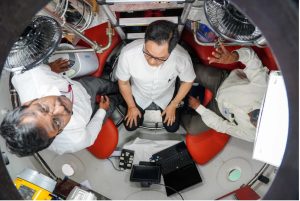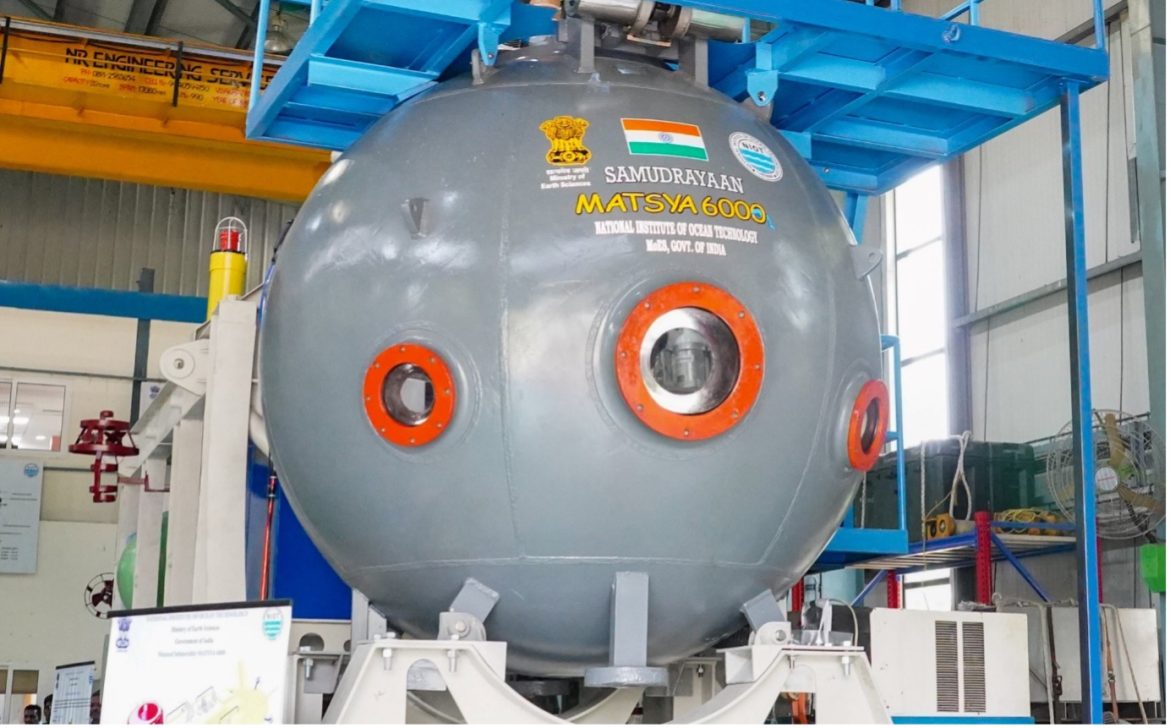In the aftermath of a triumphant lunar mission, Indian scientists are gearing up for yet another audacious venture, Project Samudrayaan. In a groundbreaking mission poised to explore the deep ocean, three intrepid individuals are set to plunge a staggering 6,000 meters beneath the ocean’s surface aboard a homegrown submersible known as “Matsya 6000.” This ambitious undertaking aims to unearth precious metals and minerals, with a focus on cobalt, nickel, and manganese.
The project has been dubbed “Matsya 6000” and has been under development for nearly two years. It is now ready for its maiden sea trials, scheduled to take place early in 2024 off the coast of Chennai in the Bay of Bengal. This mission carries added significance following the unfortunate loss of the Titan submersible during a voyage to explore the Titanic wreckage in the North Atlantic Ocean in June 2023.

Scientists from the National Institute of Ocean Technology (NIOT) have meticulously scrutinized every aspect of Matsya 6000, including its design, materials, testing, certification, redundancy measures, and standard operating procedures.
Union Minister Kiren Rijiju, speaking on the importance of the Deep Ocean Mission, stated, “The Deep Ocean Mission supports the ‘Blue Economy’ vision of Prime Minister Narendra Modi, and envisages sustainable utilization of ocean resources for economic growth of the country, improve livelihoods and jobs, and preserve ocean ecosystem health.”
M Ravichandran, the secretary of the Ministry of Earth Sciences, revealed, “Samudrayaan mission is underway as part of the Deep Ocean Mission. We will be conducting sea trials at 500 meters depth in the first quarter of 2024.” The mission’s completion is anticipated by 2026, positioning India among the exclusive club of nations with manned submersible capabilities, including the US, Russia, Japan, France, and China.
Beyond its quest for valuable minerals, Matsya 6000 is poised to explore the enigmatic realm of chemosynthetic biodiversity within hydrothermal vents and the frigid depths where methane seeps emerge.
Key features of Matsya 6000 include a 2.1-meter diameter sphere capable of accommodating three occupants. Constructed from an 80mm-thick titanium alloy, this sphere is engineered to withstand the staggering pressure of 600 bar, equivalent to 600 times the pressure at sea level, all at a depth of 6,000 meters. The submersible is designed to operate continuously for 12 to 16 hours, with a substantial 96-hour oxygen supply to ensure crew safety.
Director Ramadass of NIOT emphasized the meticulous precautions taken, stating, “Except for the sphere, we have redundancy for everything. Sometimes double, sometimes triple redundancy. An official sea trial will be certified, and we have gone with DNV-GL for certification. We will also follow standard operating procedures, such as deploying the submersible from a ship, which will remain on the surface right above the submersible for easy communication with the underwater vehicle.”

